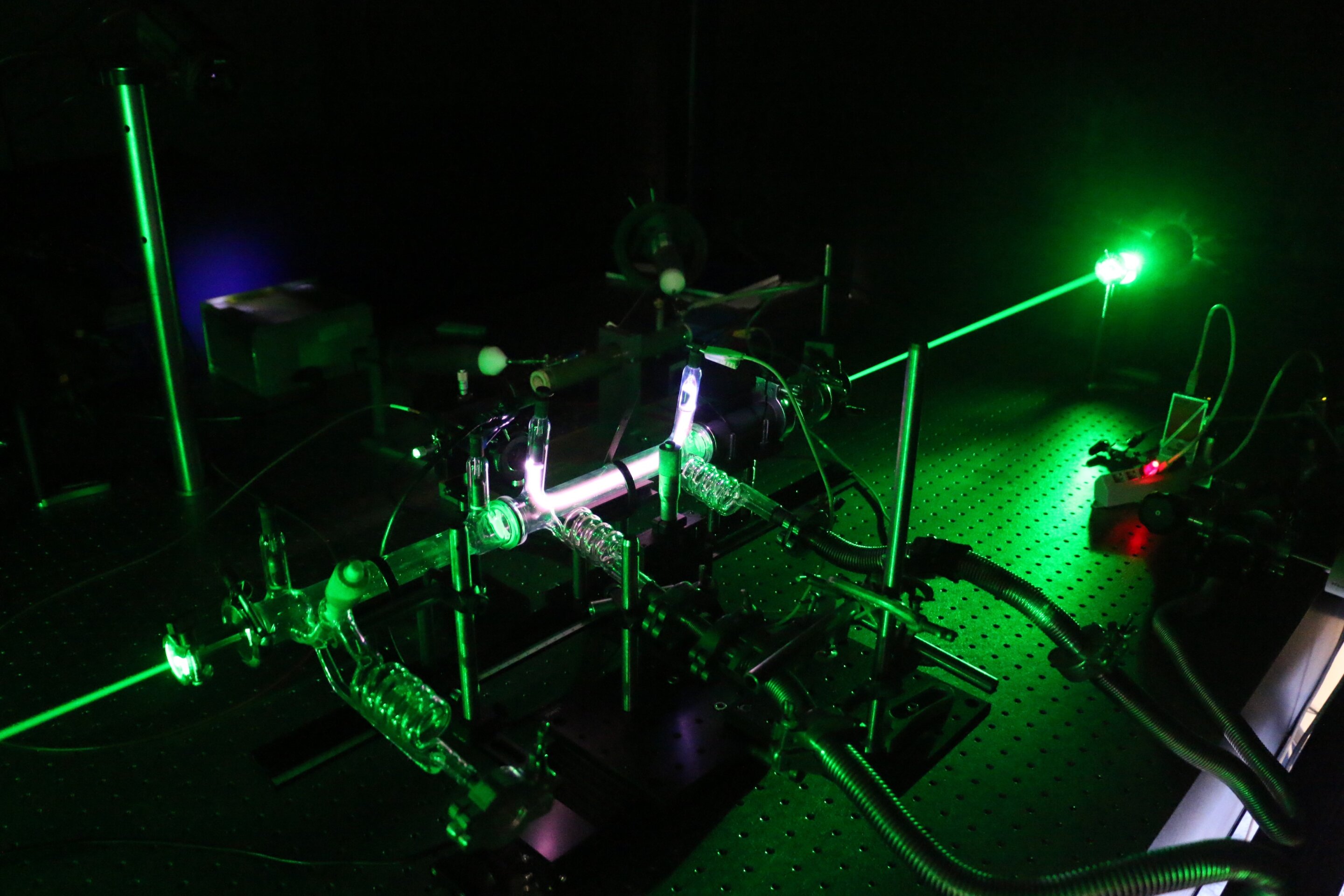An international team of researchers, including scientists from DIFFER, present a plasma-based way to produce and separate oxygen within the Martian environment. They published their findings in the Journal of Applied Physics (open access).
This new plasma-based solution is a complementary approach to NASA's Mars Oxygen In-Situ Resource Utilization Experiment, and it may deliver high rates of molecule production per kilogram of instrumentation sent to space. Such a system could play a critical role in the development of life-support systems on Mars and the feedstock and base chemicals necessary for processing fuels, building materials, and fertilizers.

Laboratoire de Physique des Plasmas,
Ecole Polytechnique in France.
(c) Olivier Guaitella
Two challenges
According to the team, the natural conditions on Mars are nearly ideal for in situ resource utilization by plasmas, since the atmosphere is primarily formed by carbon dioxide that can be split to produce oxygen, and its pressure is favorable for plasma ignition. However, two big hurdles stand in the way of producing oxygen on Mars.
The first challenge is the decomposition of carbon dioxide molecules to extract oxygen. "It's a very difficult molecule to break," says lead author Vasco Guerra, of the University of Lisbon (Portugal). The second challenge is the separation of the produced oxygen from a gas mixture that also contains, for example, carbon dioxide and carbon monoxide. "We're looking at these two steps in a holistic way to solve both challenges at the same time. This is where plasmas can help", adds Vasco Guerra.
Channeled energy
"When bulletlike electrons of the plasma collide with a carbon dioxide molecule, they can directly decompose it or transfer energy to make it vibrate," Guerra explains. "This energy can be channeled, to a large extent, into carbon dioxide decomposition. Together with our colleagues in France and the Netherlands, we experimentally demonstrated the validity of these theories. Moreover, the heat generated in the plasma is also beneficial for the separation of oxygen."
Oxygen is key to creating a breathable environment, as well as the starting point to produce fuels and fertilizers for future Martian agriculture. Local production of fuels will be important for future missions. All are essential for future human settlement on Mars. By dissociating carbon dioxide molecules to produce green fuels and recycle chemicals, the plasma technology may also aid in addressing climate change on Earth.
Scientific paper
V. Guerra, T. Silva, N. Pinhão, O. Guaitella, C. Guerra-Garcia, F.J.J. Peeters, M.N. Tsampas, and M.C.M. van de Sanden, Plasmas for in situ resource utilization on Mars: Fuels, life support, and agriculture, Journal of Applied Physics 132, 070902 (2022), DOI (open access): https://doi.org/10.1063/5.0098011
Source: press release of the American Institute of Physics, publisher of the Journal of Applied Physics
Go to the News page.